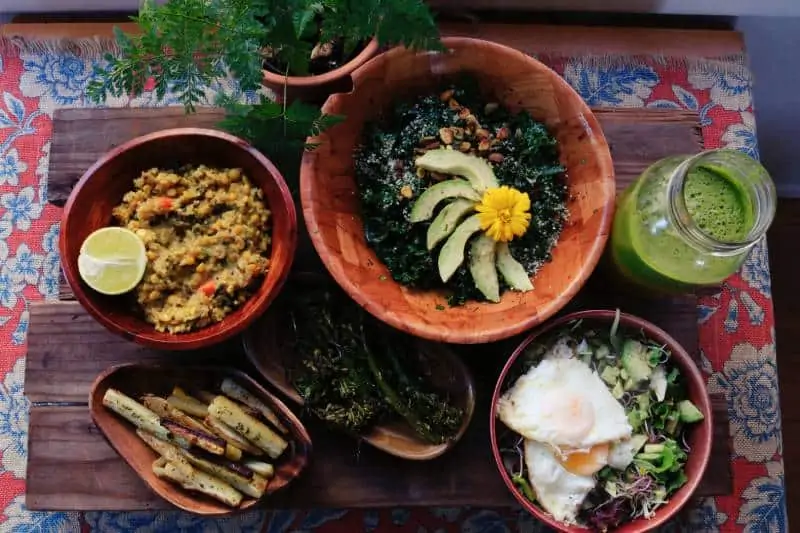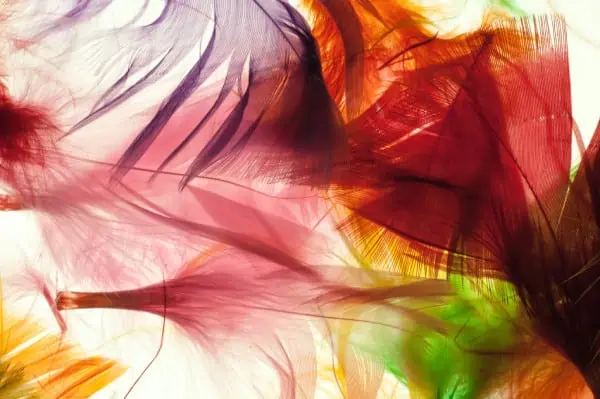Would your friends describe you as someone who is always on the go? Do you learn things quickly and can effortlessly work on multiple tasks at once? Or do you feel sensitive to cold weather and struggle to warm up your hands and feet?
If this sounds like you, you may be what is known in Ayurveda as the Vata dosha type. Understanding this ancient medicine concept can help you make better lifestyle choices to improve your sleep, energy levels, and mood while preventing many physical and mental health conditions.
So, what is the Vata dosha, how does it affect us, and how can we balance Vata to enjoy a more holistic lifestyle?
Contents
What Are The Doshas?
The doshas are a foundational concept in the philosophy of Ayurvedic medicine. According to Ayurveda, three energetic forces exist within us, influencing everything in our minds and bodies, from digestion to energy levels to emotions. Although the three doshas (known as Vata, pitta, and Kapha) have different properties, there are all equally essential to our physiology.
Still, most people have one or two dominant doshas. Scientific research supports the Ayuverdic belief that a person’s dosha determines physical characteristics, behavioral traits, and typical mental and emotional states. For example, your sleep patterns could be down to your dominant dosha; Vata-dominant people are most likely to have poor sleep quality. In contrast, Kapha-dominant people tend to oversleep and take regular naps.
What’s more, Ayurvedic medicine is based on the idea that everything in the universe comprises the five elements; air, water, fire, ether, and earth. Thus, each dosha has a unique element combination.
The three doshas are:
- Vata dosha – Elements of air and space – Represents cold, light, dry, rough, flowing, and spacious.
- Pitta dosha – Elements of fire and water – Represents hot, light, sharp, oily, liquid, and mobile.
- Kapha dosha – Elements of water and earth – Represents steady, stable, heavy, slow, cold, and soft.
It’s important to note that we do not have the same constitution for our entire lives. Our dosha combinations are constantly changing, and many things can alter them, including:
- The current season – Each dosha is associated with a season
- Your current life circumstances
- Your diet
- Your age and life phase
- External, lifestyle, or environmental factors
If you are unsure what your dominant dosha is, you can take this short online dosha determination quiz.
The Importance Of The Vata Dosha

The Vata dosha governs movement in the body and mind. This includes physical processes like blood flow and breathing and mental processes like processing thoughts and emotions. It is also responsible for facilitating healthy communication between the mind and the nervous system.
This type of energy can be described as light, cool, and dry and is associated with autumn/fall. Vata-dominant people are often described as slim, energetic, and creative. They are usually free-spirited, highly creative, and good at thinking outside the box, though they can get distracted easily. They may share some or all of these characteristics:
- A small, naturally thin, and lean body type
- Thin bones and skin
- Small eyes
- Naturally cold hands and feet, especially during cold weather
- Skin that is dry and cool to the touch
- Flexible muscles and high mobility in the joints
- A clear and alert mind
- The ability to learn easily
- The ability to multi-task
- Energetic and dynamic; always “on the go.”
The biggest mental block for Vata-dominant people is making decisions without overanalyzing the situation. The most significant physical obstacle is staying still and doing nothing (because of their restless energy).
Signs Of Vata Imbalance
As we all have some level of vata in our systems, you’ll likely have a few of the above characteristics, even if one of the other doshas is the most dominant. However, Vata-dominant people will have the most pronounced Vata characteristics, particularly physical ones.
Those with a Vata constitution are at risk of having excess Vata energy. If you have a Vata imbalance, you may experience some of the following symptoms:
- Poor circulation
- Sleep disturbances
- A busy, fast-moving mind with thoughts quickly passing through
- Anxiety and nervousness
- Constantly feeling rushed or in a hurry.
- Tendency to be forgetful
- Feeling restlessness, dizziness, or ungrounded.
- Lack of mobility and cracking joints
- Very high sensitivity to the cold
- Very dry skin, hair, and lips
- Dehydration
- Digestive issues, such as bloat, gas, or constipation
How To Balance Vata
According to Ayurveda, your diet, exercise, and lifestyle choices should be based on your dominant dosha to prevent an imbalance. Moreover, as the Vata dosha is about flow and movement, many Vata people experience frequently changing moods and emotions.
Because of this, following a Vata balancing lifestyle that promotes stability and grounding is essential. Ayurveda teachings suggest that people with the Vata constitution follow a regular daily routine and practice calming activities like meditation to manage stress. You should also maintain a warm body temperature by consuming warm foods and drinks. Let’s discuss this further.
Vata Balancing Diet

Typically, you should choose foods opposite to your dosha’s characteristics to create a balancing effect. Therefore, Ayurvedic wellness professionals recommend balancing the cool, dryness of Vata by eating warm, moist/soft, cooked foods and avoiding dry, raw, and cold foods. What’s more, this is one dosha that benefits from oily and heavy foods as it adds balance to the lightness and airiness of Vata and promotes healthy digestion.
Here are some examples of the best Vata diet foods and the ones you should avoid.
Most Nourishing foods for balancing vata
- Soft, moist fruits like berries, peaches, and bananas
- Cooked vegetables like green beans, squash, and sweet potato
- Warm oats
- Brown rice
- Rice pudding
- Lean meat
- Eggs
- Low-fat dairy products, including yogurt and cottage cheese
- Healthy fats and oils, including extra virgin olive oil, avocado oil, and coconut oil
- Warm drinks like warm soy milk or Masala tea
- Warming spices like ginger, black pepper, cinnamon, cumin, and mustard seeds.
- Natural sweeteners like honey and maple syrupWhile you may not remember all the food items you should eat to balance Vata, the fundamental principle is to eat foods served warm. In addition, you should drink water at room temperature and not add ice to your beverages.
Foods to avoid
- Sour fruits like bitter melon, oranges, and lemons
- All dried fruits
- Raw vegetables, including lettuce, tomatoes, and raw onions
- Dry food like crackers, crisps, or popcorn
- Ice cream and frozen yogurts
- Cold or carbonated drinks
- Coffee (as high caffeine levels can cause a vata imbalance)
- Sugar and processed sweetners
Again the main principle is to avoid cold or raw food and foods that lack moisture.
Along with foods, certain Ayurvedic herbal supplements can help to balance Vata. Ashwagandha is particularly beneficial for reducing stress and promoting a sense of calm. Shatavari also helps to manage anxiety and relax the nervous system.
Exercise For The Vata Dosha

As Vata individuals have a very dynamic, active, and always-on-the-go nature, when it comes to exercise, you should choose activities that match those characteristics. This means flowing, dynamic exercises that involve constant movement. Some examples are dancing, cycling, running, or walking. For wellness activities, choose dynamic vinyasa flow yoga or tai chi.
Lifestyle Habits For The Vata Dosha

Grounding and calming activities are best for a Vata dominance as it balances the air/space element combination. Earthing, which means walking in nature barefoot, is one of the best ways to increase the earth element and balance Vata.
In addition, meditation and other relaxing, mindful practices like journaling or taking a bath with essential oils help to promote a peaceful environment. This helps to reduce anxious thoughts and slow down mental activity, which is vital as the mind of a Vata person is typically very busy and fast-moving.
Another way to balance Vata is to follow a structured daily routine, including morning and evening rituals and set meal times. Unfortunately, people with a Vata imbalance often live sporadically as they get distracted easily and often skip meals. Thus, introducing more structure in your days will help to cultivate a sense of stability and grounding, keeping many Vata imbalance symptoms at bay.
Another nourishing Vata-friendly activity that is great for your body and mind is getting an Ayurvedic massage. You can also learn Ayurvedic self-massage techniques for the Vata dosha and do it yourself. Use warm sesame oil or Vata massage oil like this one from Banyan Botanicals. The warming and grounding herbal oil contains Ashwagandha, Shatavari & Passionflower to soothe the mind and the nervous system.
Final Thoughts On Balancing Vata
There are many beautiful qualities of the Vata constitution. However, like all three doshas, an imbalance can cause havoc to your mind, body, and spirit. Luckily though, there are many ways you can reduce Vata energy and enjoy good health and well-being. So if vata is your dominant dosha, give these nutrition, exercise, and lifestyle tips a go!


